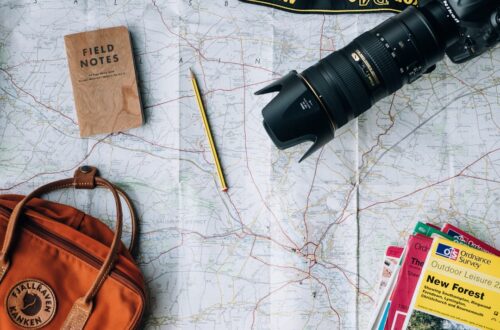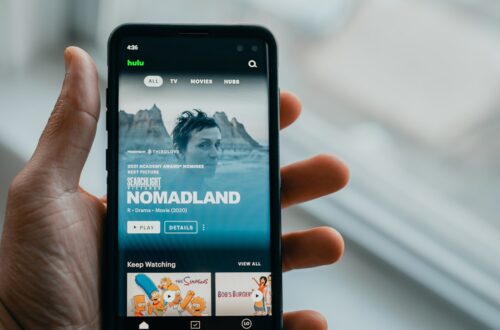The concept of a doppelganger has fascinated and intrigued people for centuries. Derived from the German word meaning “double-goer,” a doppelganger refers to a person’s exact double or look-alike. This phenomenon has captured the imagination of many, leading to various interpretations and beliefs surrounding the existence of these mysterious doubles.
The origins of the doppelganger concept can be traced back to ancient folklore and mythology. In Norse mythology, for example, it was believed that seeing one’s own double was an omen of impending death. Similarly, in Celtic folklore, encountering a doppelganger was seen as a sign that one’s soul had been stolen by fairies. These early beliefs laid the foundation for the modern understanding of doppelgangers.
Key Takeaways
- Doppelgangers are the concept of seeing a double of oneself.
- The science behind doppelgangers involves the theory of parallel universes.
- Personal experiences of encountering doppelgangers can have a psychological impact.
- Doppelgangers are a popular theme in pop culture, literature, poetry, and art.
- Superstitions and beliefs surrounding doppelgangers can have a dark side.
The Science Behind Doppelgangers and the Theory of Parallel Universes
While the concept of doppelgangers may seem fantastical, there is a scientific theory that provides a possible explanation for their existence. The theory of parallel universes, rooted in theoretical physics, suggests that there are multiple universes existing alongside our own. These parallel universes may contain alternate versions of ourselves, including our doppelgangers.
According to this theory, every decision we make creates a new branch in the multiverse, resulting in different outcomes and versions of ourselves. It is believed that occasionally these alternate versions can cross paths with our own reality, leading to encounters with our doppelgangers.
Personal Experiences of People Who Have Encountered Their Doppelgangers
There have been numerous accounts throughout history of individuals claiming to have encountered their doppelgangers. These stories range from ordinary people to famous figures, adding an air of intrigue and mystery to the phenomenon.
One such story involves Abraham Lincoln, who reportedly saw his own double in a mirror shortly before his assassination. Another famous example is the case of Emilie Sagée, a 19th-century French schoolteacher who was said to have been seen in two places at once by her students. These personal experiences add to the mystique surrounding doppelgangers and leave us questioning the nature of reality.
The Psychological Impact of Seeing Your Own Double
Encountering one’s own double can have a profound psychological impact on an individual. The experience can be both unsettling and disorienting, challenging one’s sense of self and identity. The phenomenon is often described as an eerie feeling, as if looking into a mirror but seeing a stranger staring back.
The concept of the “uncanny valley” is often used to explain this unsettling feeling. Coined by robotics professor Masahiro Mori, the uncanny valley refers to the discomfort people feel when encountering something that looks almost human but is not quite right. Seeing one’s own double can trigger this response, as it blurs the line between familiarity and strangeness.
The Pop Culture Phenomenon of Doppelgangers in Movies and TV Shows
The concept of doppelgangers has become a popular theme in movies and TV shows, further fueling our fascination with this phenomenon. Examples can be found in various genres, from horror films like “Black Swan” to science fiction series like “Stranger Things.”
One notable example is the TV show “Orphan Black,” which revolves around a group of clones who discover their existence and must navigate the complexities of their shared identity. This exploration of doppelgangers allows for thought-provoking storytelling and raises questions about individuality and nature versus nurture.
The Mythology and Folklore Surrounding Doppelgangers

Doppelgangers have long been a part of mythology and folklore in different cultures around the world. In ancient Egyptian mythology, for instance, it was believed that everyone had a ka, a spiritual double that could leave the body and take on a different form. In Japanese folklore, the concept of the “fetch” is similar to that of a doppelganger, representing an omen of death.
These cultural interpretations of doppelgangers highlight the universal fascination with the concept and the belief that encountering one’s double carries significant meaning or consequences.
The Role of Doppelgangers in Literature and Poetry
Doppelgangers have also played a prominent role in literature and poetry, serving as a powerful literary device to explore themes of identity, duality, and self-reflection. Famous works such as Edgar Allan Poe’s “William Wilson” and Fyodor Dostoevsky’s “The Double” delve into the psychological implications of encountering one’s own double.
In these works, the doppelganger serves as a metaphor for the protagonist’s internal struggles and inner demons. The presence of the double forces the characters to confront their own flaws and confrontations with their true selves.
Doppelgangers in Art: Depicting the Concept of Self-Reflection
Artists throughout history have also been captivated by the concept of doppelgangers, using it as a means to explore the idea of self-reflection. Famous artworks such as Salvador Dalí’s “The Persistence of Memory” and René Magritte’s “The Son of Man” depict distorted or obscured faces, suggesting a sense of duality or hidden identity.
These artworks invite viewers to question their own sense of self and challenge conventional notions of identity and reality. By depicting doppelgangers in art, artists encourage introspection and self-discovery.
The Dark Side of Doppelgangers: Superstitions and Beliefs
While some cultures view encountering one’s doppelganger as a curiosity or an opportunity for self-reflection, others hold strong superstitions and beliefs surrounding the phenomenon. In many traditions, seeing one’s double is considered a bad omen, often associated with impending death or misfortune.
These superstitions reflect the deep-rooted fear and unease that doppelgangers can evoke in people. The belief in the negative consequences of encountering one’s double serves as a cautionary tale and a reminder of the unknown forces that may exist beyond our understanding.
Embracing the Idea of Having a Twin Self
In conclusion, the concept of doppelgangers has captivated human imagination for centuries, inspiring myths, folklore, literature, art, and popular culture. Whether seen as a scientific possibility or a supernatural phenomenon, doppelgangers continue to intrigue and challenge our understanding of self and reality.
While encountering one’s own double can be unsettling and disorienting, it also offers an opportunity for self-reflection and self-discovery. Embracing the idea of having a twin self can lead to a deeper understanding of our own identities and the complexities of human existence. Rather than fearing the unknown, we can embrace the concept of doppelgangers as a means to explore our own inner worlds and expand our understanding of what it means to be human.
If you’re curious about how many of me exist in the world, you might find this article on Net Worth Guy quite fascinating. It delves into the concept of personal net worth and explores how individuals can calculate and improve their financial standing. Discovering how many of you there are out there can be an eye-opening experience, and this article provides valuable insights on managing your finances and building wealth. Check it out here!
FAQs
What is “How Many of Me”?
“How Many of Me” is a website that allows users to find out how many people in the United States share their name.
How does “How Many of Me” work?
The website uses data from the United States Census Bureau to determine how many people in the country have a given name. Users simply enter their first and last name to receive a result.
Is “How Many of Me” accurate?
The website’s data is based on the most recent United States Census, so it is generally considered to be accurate. However, it is important to note that the website only provides information on people with the exact same name, so there may be some margin of error.
What information does “How Many of Me” provide?
The website provides information on how many people in the United States share a given name, as well as the percentage of the population with that name.
Can “How Many of Me” be used for identity theft?
No, “How Many of Me” does not provide any personal information beyond a person’s name. It cannot be used for identity theft or any other malicious purposes.




